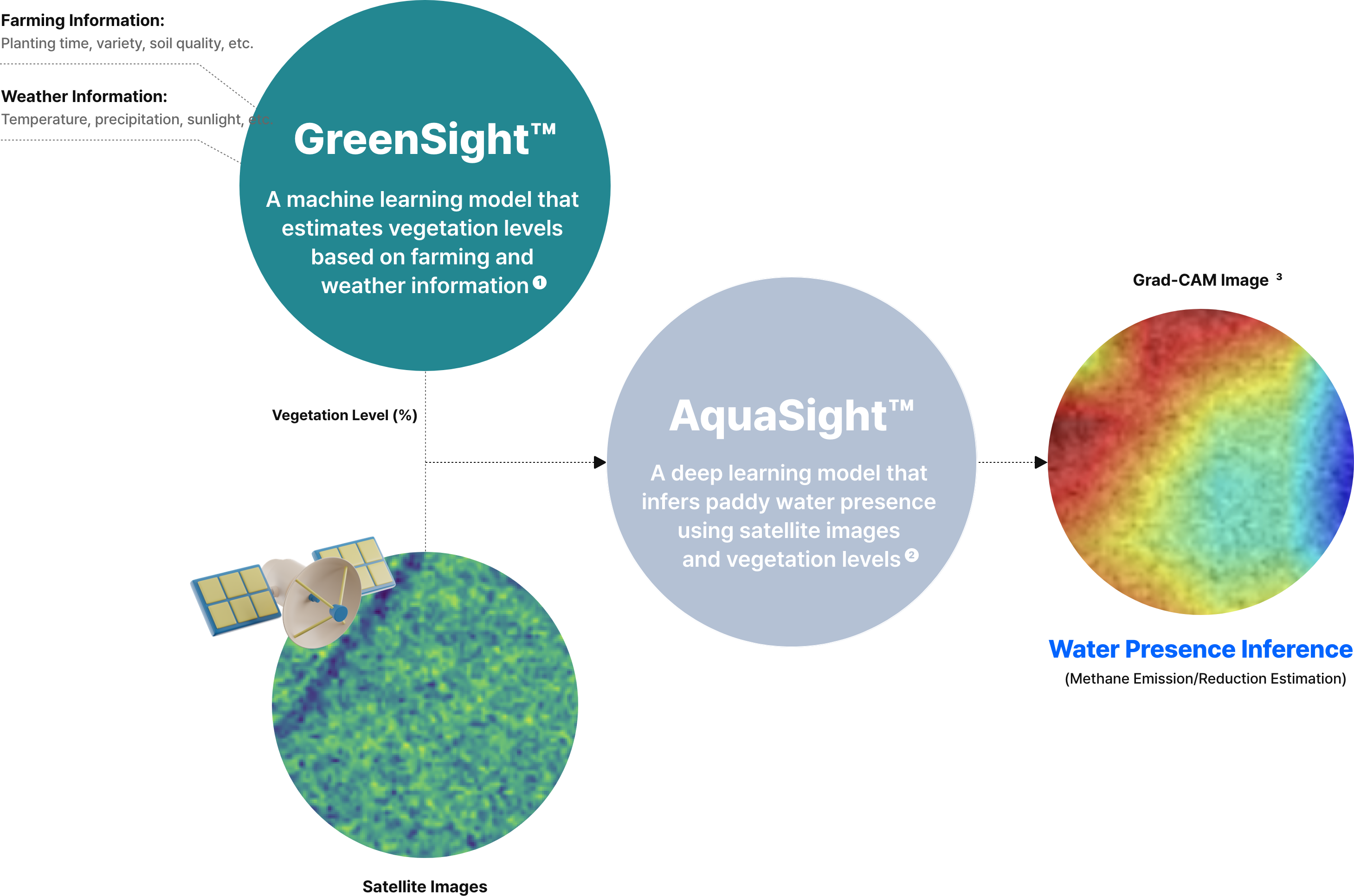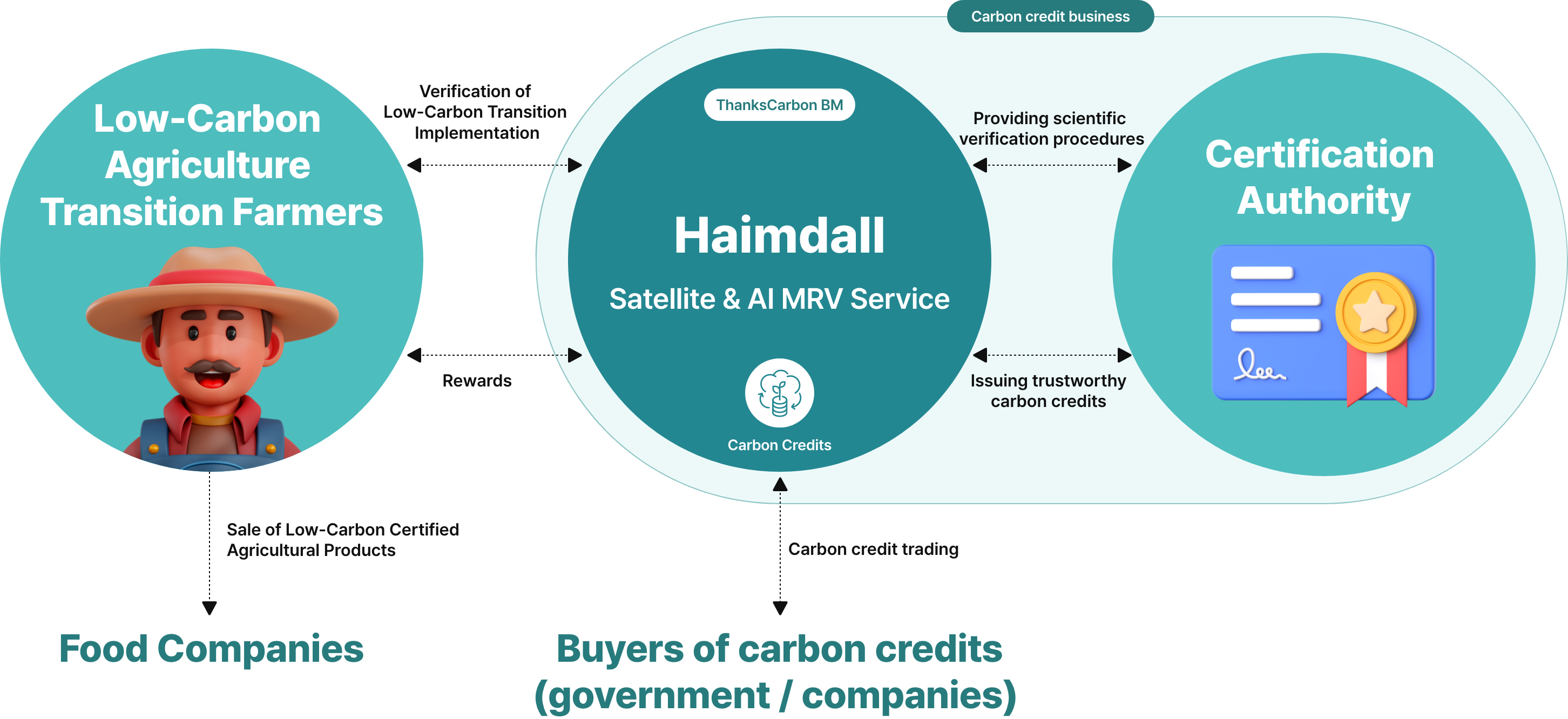Managing Carbon Emissions
Is Accurate and Easy with Haimdall
-
Accurate AI-Based Carbon Reduction Measurement
See how much methane emissions have decreased for our contract farms this year!
To overcome the challenges of monitoring for verification, we precisely measure, report, and verify the carbon reduction amount invested in agriculture through our AI-based satellite MRV service.
-
Easy to Follow User-Friendly Dashboard
Check the status of our company’s investments in Vietnamese rice farming at a glance!
We facilitate easy and convenient participation in carbon credit projects using the Digital Farming Diary app.
-
Agriculture-Based Carbon Credits Preferred by Global Companies
Invest in carbon-neutral agriculture with global food companies such as Kellogg’s and General Mills!
To address the methane emissions problem in rice farming, we help farmers easily implement water management methods (e.g., AWD).
Using GreenSight™ machine learning we inferred vegetation levels and researched satellite wavelength bands with vegetation penetration to find the optimal method for detecting paddy water. We also developed AquaSight™, a deep learning model demonstrating an accuracy of 92%.


Using Haimdall, we scientifically validate farmers’ eco-friendly transitions, generating carbon credits. This provides value to farmers, carbon credit buyers (governments, companies), and food companies.


Enhancing the value of the food industry
through agriculture-based carbon reduction
-
Low-carbon food production enhances ESG/CSR corporate value
Low-carbon food production plays a crucial role in enhancing a company’s brand value. By raising awareness of sustainable agriculture and food production, companies can strengthen their ESG (Environmental, Social, Governance) and CSR (Corporate Social Responsibility) management.
-
Managing carbon emissions from raw materials to low-carbon agriculture gives consumers a better choice
Haimdall supports low-carbon agriculture by accurately managing and reducing carbon emissions from rice production areas (paddies). Raw materials produced through low-carbon agriculture are thus born as foods that reduce carbon footprints. Foods managed with low carbon not only reduce their environmental impact, but also offer consumers a better choice.







